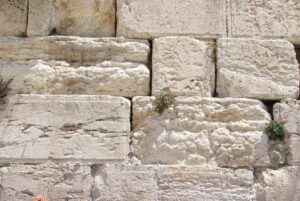Travertine Aragonite Limestone
Jerusalem Stone
“Aragonite as in Jerusalem … The study of the area of the feet has been particularly interesting. In the greatly enlarged photographs, taken by Vernon Miller in 1978, one can see that the cloth looks dirty in the region corresponding to one of the heels. There, on the threads, is an exceptional amount of dust which helps one to think that the Man of the Shroud, very probably, had walked barefooted. [Archaeology, Vol. 34, No. 1, January-February 1981, p.41] Joseph Kohlbeck, an American crystallographer with the Hercules Aerospace Division, has identified a much greater concentration of calcium carbonate among the mineralogical particles present on the feet when compared with the other areas of the sheet. This calcium carbonate is, however, not the common calcite but a rarer form, the aragonite, with small amounts of strontium and iron. The comparison with samples of calcium carbonate taken from a tomb in Jerusalem has provided surprising similarities. Even in this case it is aragonite with small amounts of strontium and iron. Further chemical analyses, both on the aragonite found on the Shroud and that from Jerusalem, were carried out by means of a microprobe by Ricardo Levi-Setti of the University of Chicago. The two type samples have furnished extraordinarily similar results, which makes it highly probable that the aragonite on the Shroud came from Jerusalem.

Leave a Reply